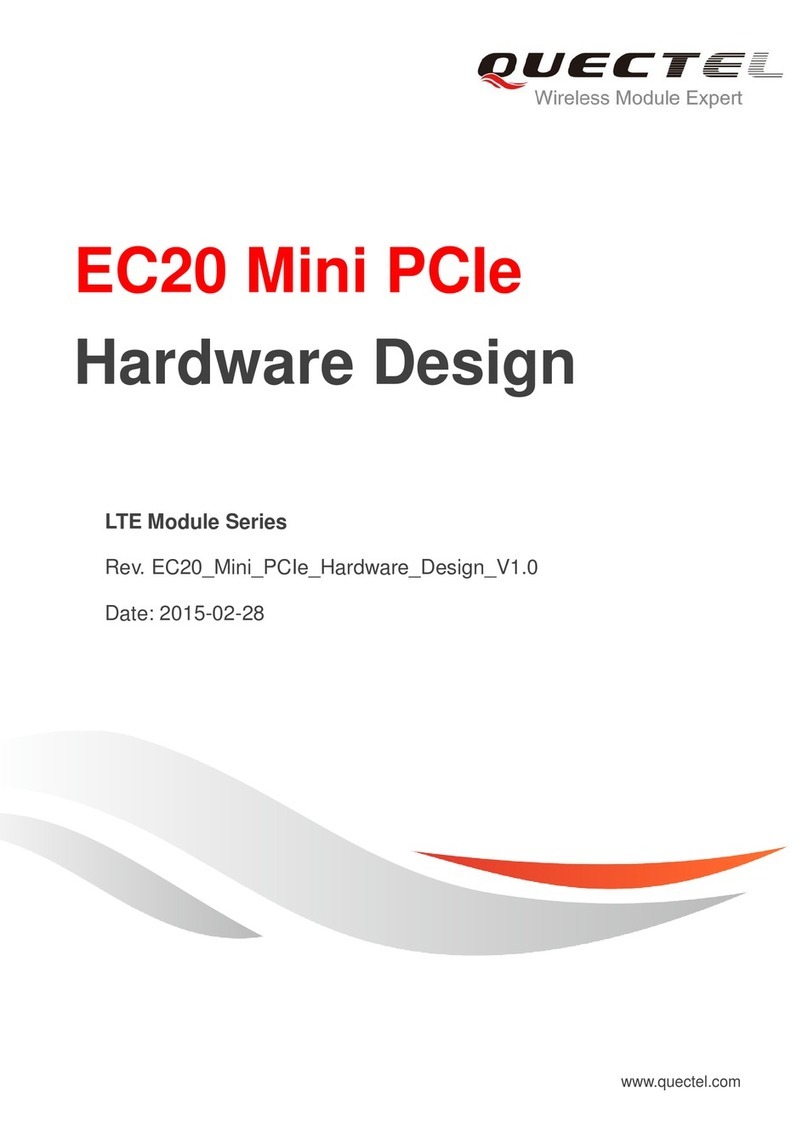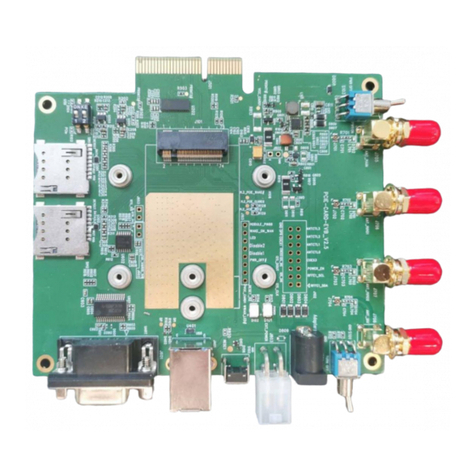LTE Standard Module Series
EC20 R2.1 Mini PCIe Hardware Design
EC20_R2.1_Mini_PCIe_Hardware_Design 3 / 51
Contents
About the Document...................................................................................................................................2
Contents.......................................................................................................................................................3
Table Index...................................................................................................................................................5
Figure Index.................................................................................................................................................6
1Introduction ..........................................................................................................................................7
1.1. Safety Information......................................................................................................................8
2Product Concept..................................................................................................................................9
2.1. General Description...................................................................................................................9
2.2. Key Features ...........................................................................................................................10
2.3. Functional Diagram .................................................................................................................13
3Application Interfaces .......................................................................................................................14
3.1. Pin Assignment........................................................................................................................14
3.2. Pin Description.........................................................................................................................15
3.3. Operating Modes.....................................................................................................................18
3.4. Power Saving...........................................................................................................................18
3.4.1. Sleep Mode....................................................................................................................18
3.4.2. Airplane Mode................................................................................................................19
3.5. Power Supply...........................................................................................................................19
3.6. UART Interfaces......................................................................................................................20
3.6.1. Main UART Interface......................................................................................................20
3.6.2. COEX UART Interface*..................................................................................................21
3.7. USB Interface ..........................................................................................................................21
3.8. (U)SIM Interface ......................................................................................................................22
3.9. PCM and I2C Interfaces..........................................................................................................24
3.10. Control and Indication Signals.................................................................................................27
3.10.1. RI Signal.........................................................................................................................27
3.10.2. DTR Signal.....................................................................................................................28
3.10.3. W_DISABLE# Signal......................................................................................................28
3.10.4. PERST# Signal..............................................................................................................28
3.10.5. LED_WWAN# Signal .....................................................................................................29
3.10.6. WAKE# Signal................................................................................................................30
4GNSS Receiver...................................................................................................................................31
4.1. General Description.................................................................................................................31
4.2. GNSS Performance.................................................................................................................31
4.3. GNSS Frequency.....................................................................................................................32
5Antenna Connection..........................................................................................................................33
5.1. Antenna Connectors................................................................................................................33
5.1.1. Operating Frequency .....................................................................................................33
5.2. Antenna Requirements............................................................................................................34





























